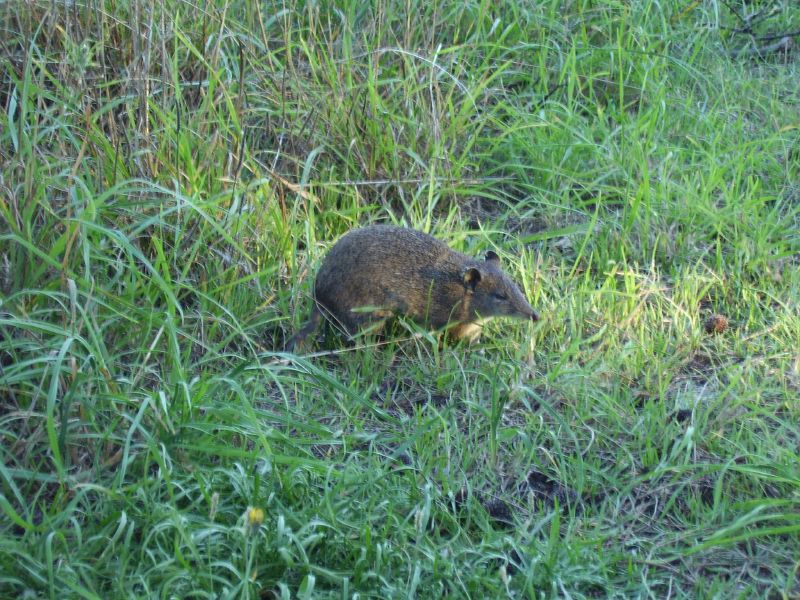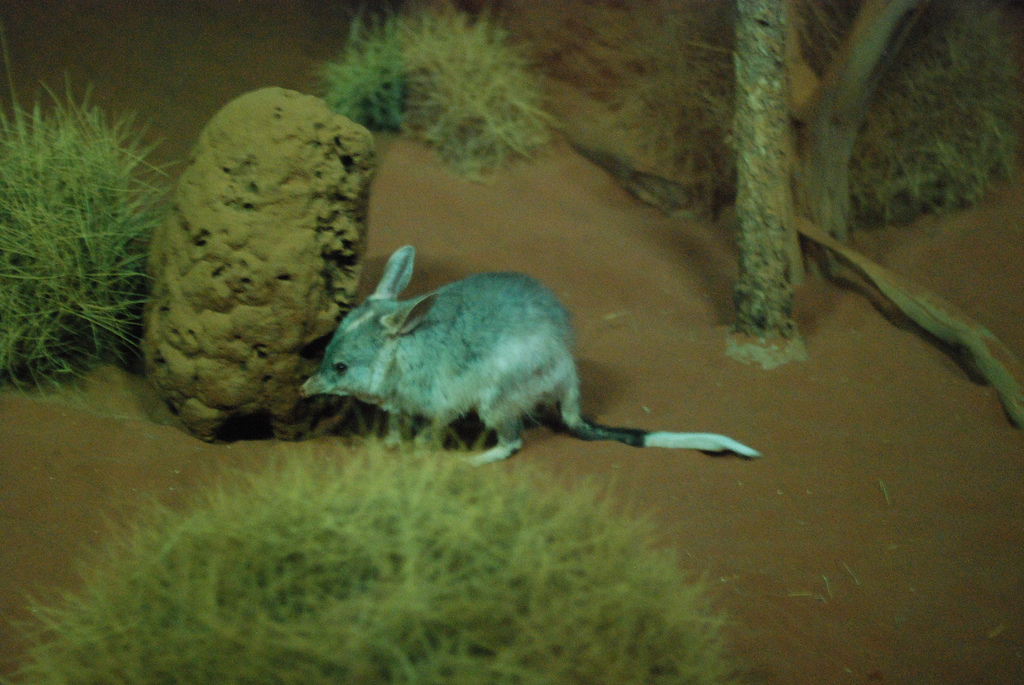Peramelemorphia -- Cute Bandits or Bandicoots



Origins
The name of this order means pouched badger-shaped animal. Lest you think the person naming this order didn't get around badgers or around any other creatures to speak of, spare a thought for some bespectacled englishman sitting in a musty museum, who probably had the onerous task of finding and naming this order from odd bits of skull and teeth. One can excuse such a creature an odd bit of fancy, eh? So, now about these little pouched creatures.
This order consists of three known living families and two extinct ones. Their evolutionary relationship with other marsupials is controversial. There are two morphological(morph means shape) features in the order that appear to show a clear evolutionary link with another marsupial group: the type of foot, and the teeth. Unfortunately, these clear signposts point in opposite directions.
All members of the order are polyprotodont (have several pairs of lower front teeth), in the case of the Peramelemorphia, three pairs. This suggests that they have evolved from the Dasyuromorphia (marsupial carnivores). On the other hand, they also have an unusual feature in their feet: the second and third toes are fused together. This condition is called syndactyly, and is characteristic of the Diprotodontia (the order of marsupial herbivores that includes kangaroos, wombats, possums, and many others).
Attempts to resolve this puzzle support the claim that this order evolved either from Dasyumorphia or Diprotodontia; perhaps they are all descended from some unknown and more ancient order. All points strongly suggest that whatever the relationship of the bandicoot group to the other marsupial orders may be, it is a distant one. So rest assured, you are not the only one with a bit of a messy family history.
Physical Characteristics
It is said that these creatures look like a cross between a rabbit and a rat. I think this is very insulting to all self-respecting rabbits and rats out there so we won't take that easy and salacious route. Suffice it to say that bandicoots are agile marsupials with rather long noses and tails. Their cousins the bilbies also have long ears and nasty case of burrowing underneath anything weaker than concrete. Their forefeet have three toes and strong flattish claws and their pouches also open backwards. They are tiny creatures and can range from 7 to 23 inches(this includes tail, by the way).
Geographic Distribution
View Larger Map
Reproduction
Among marsupials, these tiny creatures have the highest rates of reproduction. Males are usually larger than the females and do engage in loutish behavior when it comes to grabbing each other's territory. Some species do build nests that cement the short interaction between males and females in the breeding season. The gestation period of a female bandicoot can be as low as 12 days. The young are quickly ushered into the pouch, flourish to maturity quickly and are then thrown out. In some species, as much as 18 babies can be born a year. In the wild only one in ten reaches maturity so there is not a population boom happening anytime soon.
Feeding Habits
A long nose can help you sometimes. Bandicoots can root out invertebrates and insects from beneath the ground by hearing for them and then digging them out with their stong claws with the nose acting as a scoop for those hard to reach prey. However, most species are omnivorous( will eat anything delicious) and are also known to eat fruit, seed and plant fiber occasionally. They would need to be able to eat anything to keep that birth rate going as high as it is.
Families within Peramelemorphia
Videos